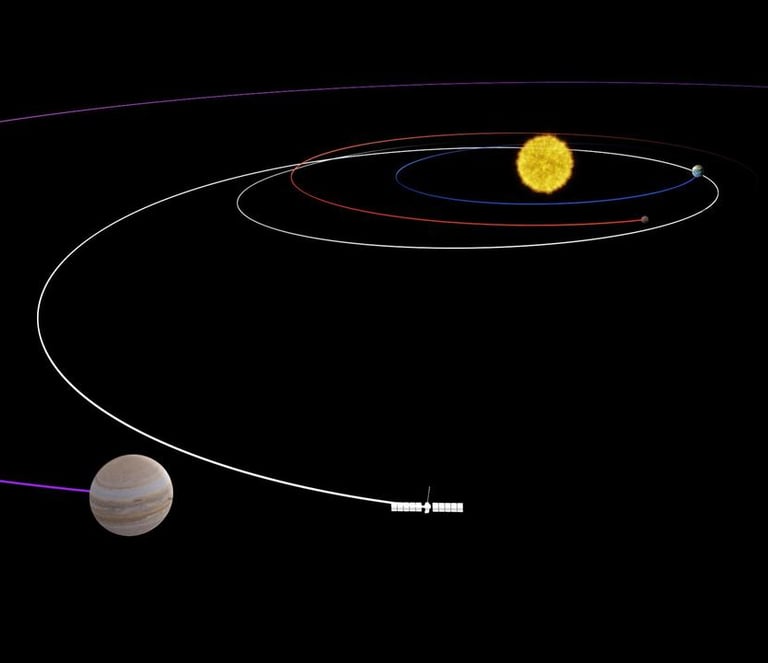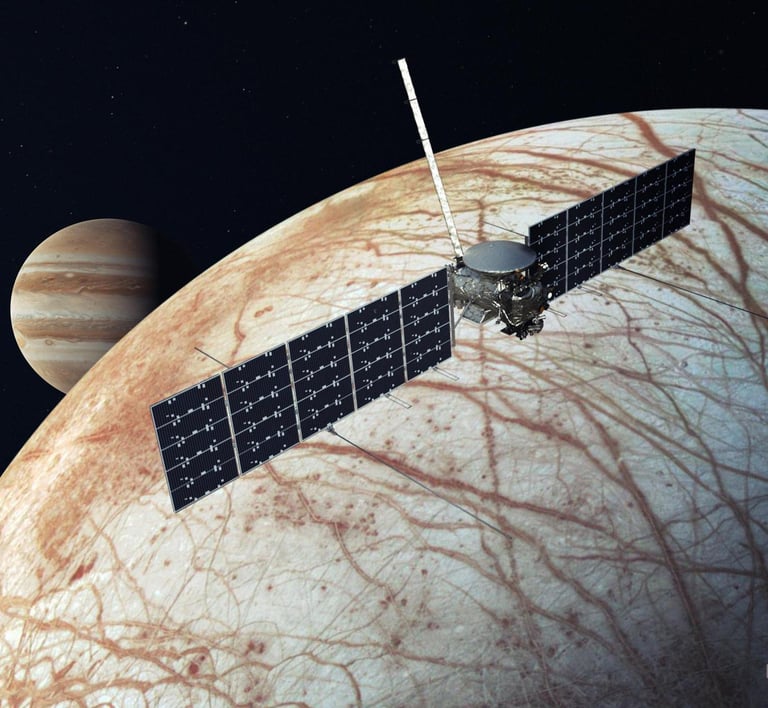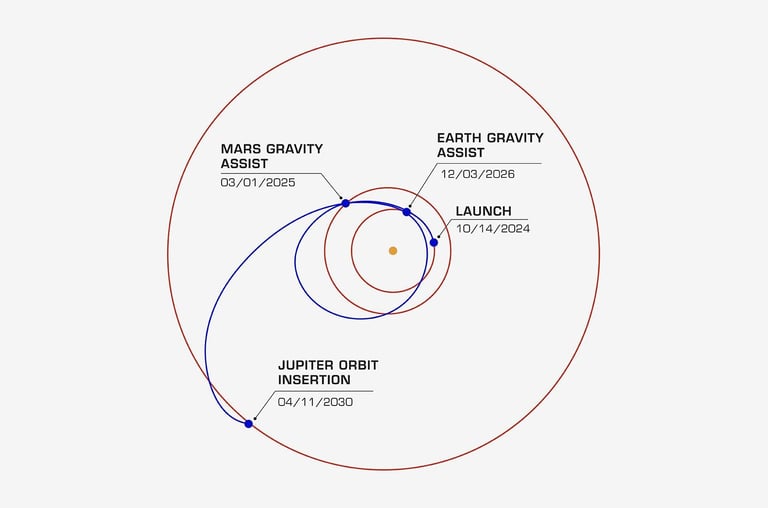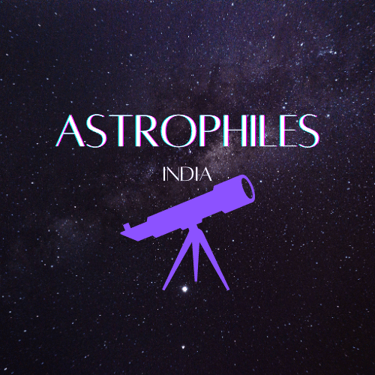Europa Clipper's Trajectory to Jupiter: A Journey to Unlock Extraterrestrial Secrets
Discover the incredible journey of NASA's Europa Clipper as it sets out to explore Jupiter’s icy moon, Europa. This article dives into the spacecraft's ingenious trajectory, groundbreaking scientific goals, and why Europa is a prime candidate in the search for extraterrestrial life. Learn how this mission could reshape our understanding of the cosmos!
SPACE NEWS
Rupa Soni
12/2/20243 min read


The Europa Clipper mission, NASA’s ambitious spacecraft, is set to explore Europa, one of Jupiter’s most intriguing moons. Slated for launch in 2024, this mission represents a monumental leap in understanding icy worlds that could potentially harbor extraterrestrial life. Let's delve into the spacecraft's complex trajectory to Jupiter, the scientific objectives of the mission, and why this icy moon holds such promise for uncovering secrets of the universe.
The Ingenious Trajectory of Europa Clipper
Reaching Jupiter, located over 484 million miles away from Earth, is no small feat. The Europa Clipper's trajectory isn't a straightforward path. Instead, it involves a series of carefully planned gravity-assist maneuvers, leveraging the gravitational pull of other celestial bodies to increase speed and conserve fuel.
1. Launch and Earth Gravity Assist
Europa Clipper will launch aboard a Falcon Heavy rocket from Kennedy Space Center. After leaving Earth, it will perform a gravity assist maneuver around Earth or another inner planet. This slingshot effect will give the spacecraft the momentum needed to head toward Jupiter.
2. Mars Flyby
One of the key elements of the trajectory involves a Mars flyby. By using the gravitational pull of Mars, Europa Clipper gains additional energy to propel it deeper into the solar system.
3. Journey to Jupiter
The final leg of the journey will see the spacecraft approaching Jupiter's massive gravitational field. This final phase requires precision navigation to ensure Europa Clipper enters a stable orbit for its mission around the gas giant and its icy moon.
Why Is Europa So Special?
Europa, one of Jupiter’s 79 moons, is a prime target in the search for life beyond Earth. Here’s why:
Subsurface Ocean: Beneath its thick icy crust, Europa harbors a vast, salty ocean that contains more water than all of Earth's oceans combined.
Geological Activity: Evidence of cryovolcanism and tectonic activity suggests that Europa's interior may be warm enough to support life.
Potential for Life: The presence of water, a key ingredient for life, along with a stable energy source and essential chemicals, makes Europa one of the most promising candidates for hosting microbial life.
Scientific Goals of Europa Clipper
The Europa Clipper will orbit Jupiter and perform detailed flybys of Europa. Its primary objectives include:
Mapping the Surface: High-resolution imagery will reveal details about Europa’s icy crust, helping scientists understand its composition and structure.
Analyzing the Subsurface Ocean: Radar instruments will probe beneath the ice, searching for liquid water and assessing the thickness of the icy shell.
Studying the Moon’s Chemistry: Europa Clipper will analyze the moon’s surface for organic compounds and other chemical building blocks of life.
Measuring Radiation: Understanding Jupiter’s radiation environment is crucial for assessing the moon’s habitability.
Challenges of the Mission
Designing a spacecraft capable of enduring the harsh radiation around Jupiter and operating in extreme cold is a significant challenge. Europa Clipper’s systems are heavily shielded, and its instruments are optimized to gather critical data despite the tough conditions.
Another challenge lies in the sheer distance: signals from Europa Clipper will take over 45 minutes to reach Earth, requiring autonomous systems to manage real-time operations.
The Significance of the Europa Clipper Mission
Europa Clipper represents humanity’s relentless quest to answer the profound question: Are we alone in the universe? By studying Europa’s habitability, the mission could provide the first concrete evidence of life beyond Earth—or help us understand why it is unique to our planet.
Looking Ahead: Europa Clipper and the Future of Exploration
The mission is not just about Europa. It paves the way for future exploration of the outer solar system. If evidence of life is discovered, it will fundamentally change our understanding of biology and the potential for life across the cosmos.
Conclusion
The Europa Clipper mission is a testament to human ingenuity and our innate curiosity about the universe. Its carefully planned trajectory to Jupiter, innovative technology, and groundbreaking objectives promise to rewrite the story of our place in the cosmos. As we anticipate its launch, one thing is clear: Europa Clipper is not just a journey to a distant moon—it’s a voyage to the frontier of knowledge and discovery.
Keywords: Europa Clipper, Jupiter, icy moons, NASA, space exploration, extraterrestrial life, subsurface ocean, Europa mission, outer solar system.




